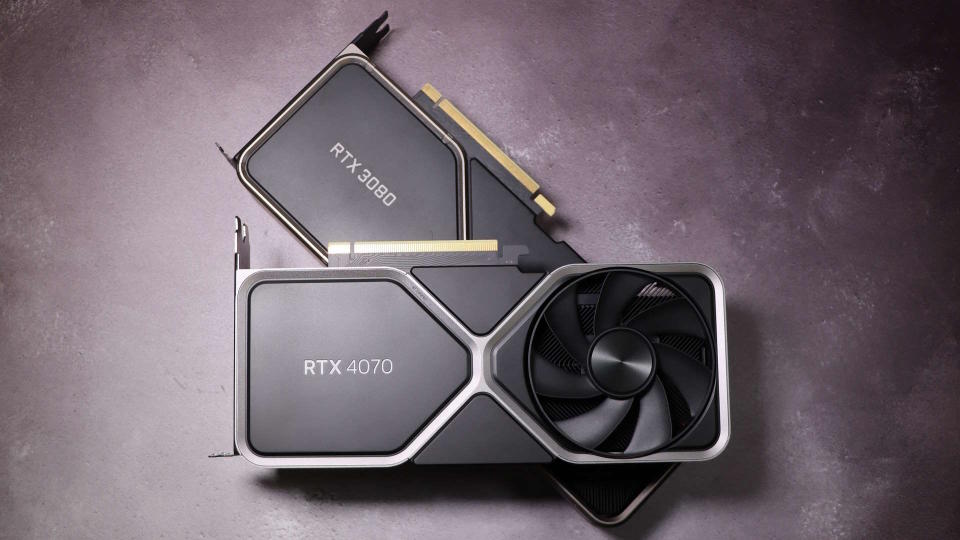AMD’s upcoming Strix Halo APU is one of the most exciting chips on the horizon, with its console-like features and the promise of more efficient and perhaps more affordable portable gaming. Now a new rumor has emerged that this could be a chiplet design that uses the same eight-core CPU CCDs as AMD’s next-generation Zen 5 desktop processors.
This exclusive info dump comes courtesy of some slides posted on the Chiphell forum. The slides allegedly show off the AMD Strix Halo APU, sometimes referred to as Sarlak, which consists of a massive SoC slab containing a pair of eight-core Zen 5 CCDs or Core Chiplet Dies plus various I/O functions, memory controller and Strix Halo. its defining feature, namely its amazing iGPU.
Keep that thought in mind and we’ll be back to the iGPU. The idea of using Strix Halo as a chip design is new but makes sense. Cramming 16 Zen 5 cores and a large iGPU will result in a massive unibody chip. So it makes sense to split them all, just like Intel did for its latest Meteor Lake laptop CPU.
The Strix Halo is said to use the same Zen 5 CCDs as AMD’s next-gen desktop CPUs, which also means it will offer the full cache allocation of these desktop chips, including L3 cache. AMD’s current APUs for laptops have reduced cache, which may impact some applications more than others.
Unfortunately, games are one of the types of applications that suffer when cache is low. So when we reviewed the Ryzen 7 8700G, we found that AMD’s desktop APUs don’t make great gaming chips.
If that’s the good news, there are questions about efficiency. Chiplet designs tend to be less efficient than monolithic chips. When you add 16 full-featured desktop cores, a 256-bit bus, and a large iGPU, that doesn’t exactly sound like a recipe for all-day battery life. That would be a shame, because if you don’t care about battery life, you can have a completely discrete GPU in your gaming laptop.
In fact, the appeal of the Strix Halo is its potential for a simplified single-chip laptop that is cheaper and more efficient due to not having a dedicated GPU, but still offers good gaming performance.

Of course, the exact source of these slides has not been determined. The title of the post on the Chiphell forum is “Some information and speculations about AMD Strix Halo”. While the data presented is reasonable, at first glance the slides don’t resemble AMD’s internal presentations.
In fact, with entries like “little possibility” and “like Navi31”, it looks like these slides are not from AMD, which is almost certain based on information the poster has gleaned from sources.
Anyway, how about that mega iGPU? It has long been said that it will not be less than 40 CU. In terms of simple architecture, this puts it on par with a desktop Radeon RX 6700 XT in terms of raw CU count.
However, Strix Halo gets what is called RDNA 3.5 specific GPU technology. It’s unclear exactly what upgrades RDNA 3.5 will have over the RDNA 3 technology found in existing Radeon RX 7000 series GPUs such as the 7800 XT and 7900 XT.
However, recently leaked documents regarding the upcoming Sony PS5 Pro may provide a clue. The updated RDNA graphics for this console are said to deliver two to four times the ray tracing performance of the RDNA 2 graphics on the standard PS5.
This is all a bit complicated, but long story short, RDNA 3.5 could offer a huge boost in ray tracing performance if associated with the new GPU in the PS5 Pro. Anyway, Strix Halo has another thing going for it in terms of graphics performance. While current APUs are all hampered by just a 128-bit memory bus, the Strix Halo uses a full 256-bit bus for much better memory bandwidth.
Your next upgrade


Best CPU for gaming: The best chips from Intel and AMD.
best gaming motherboard: Correct boards.
best graphics card: Your perfect pixel pusher is waiting for you.
Best SSD for gaming: Enter the game before others.
The Slides claim a total bandwidth of 500GB/s, which is pretty healthy even though it’s shared between the iGPU and 16 Zen 5 cores. The slides also present benchmark results in 3DMark, which place the Strix Halo between Nvidia’s RTX 4060 and RTX 4070 mobile chips.
Notably, it maintains this positioning in the 3DMark Port Royal test, which is 3DMark’s main ray tracing performance test. While many questions remain about things like battery life and pricing, they’re all thoroughly intriguing and promising.
Oh, and usability. We originally expected Strix Halo to be released later this year. Its smaller single-chip sibling is expected to hit the market in 2024. However, recent indications suggest that Strix Halo is now a 2025 product.
If true, this means it will likely be pitted against Nvidia’s next-generation mobile GPUs, known as the RTX 5060 and RTX 5070, for most of its operating life. This can give a different direction to performance skills. Watch this space, there’s a lot to play for.